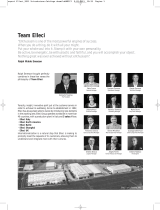
Cleaning Regular Dust And Dirt:
Just like any other construction material and wall decorations dirt will eventually deposit on our architectural panels. Most of the
dirt that accumulates on the panels can be cleaned easily. For simple dust you may use a vacuum cleaner and brush attachement.
ANTICO ELEMENTS - Headquarters: 3520 NW 46Th Street Unit #4 33142 Miami, Florida United States
Antico Elements
Architectural Products
Telephone: 305-602-0300
Antico Elements' panels are designed to require very little or no maintenance.
Thanks to the materials used to manufacture them water and dirt stays on the surface
and does not penetrate the paint of the polyurethane resins below it.
Please follow the instructions and best practices highlighted below for a long-lasting,
beautiful look of our products.
Cleaning And Maintenance Of Polyurethane Panels
If the vacuum cleaner does not do the job you may try with
water and soap. When choosing a detergent make
absolutely sure they are not of a harsh or abrasive nature.
Those materials that contain bleach or any chemical solvent,
such as paint thinners, are not recommended.
Using a wet, soft, brush apply apply some mild detergent
such as car wash soap on the panels.
In a circular motion make sure to work the soap in all
crevices and grout lines.
Once the water and soap have been applied they can be easily rinsed with water. When outdoor a water hose will work great.
A pressure cleaner may be used as long as the pressure is not high. We also recommend to keep the nozzle at a distance of at least
one foot.
Other Types Of Dirt And Stains.
Our panels are made of a synthetic resin and covered with multiple layers of acrylic paints and glazes. We consider these as some
materials that offer many benefits over natural stone and brick. Just like their counterparts, or faux brick and stone can be damaged.
The use of solvents and paints should be the last resort.
At times materials like paints, solvents, grease, gasoline or others, can come in contact with the applied paints. If stains do occur it
is likely that the above method of cleaning with water or soap will not work. We recommend using the following products, in the
order shown, to try and remove the stain.
1- Mineral spirits (the least harsh)
2- Lacquer thinner - apply very carefully and quickly as this will most likely melt the paint.
3- Us a our convenient Touch-Up kit. This kit comes with all the colors in the panels and it will make the touch-up virtually invisible.
Preventive Measures.
At times customers install our products using regular hard mortar to seal the top edges or the joints between panels. We do NOT
recommend using these product on any of the joints because they will shrink and crack as they dry. We suggest using some elastic
products like latex-based caulking. These caulking will keep their elastic property for a long time and prevent water penetration and
cracking of the paint.
For any question please don't hesitate to contact us.
ANTICO ELEMENTS - Headquarters: 3520 NW 46Th Street Unit #4 33142 Miami, Florida United States





